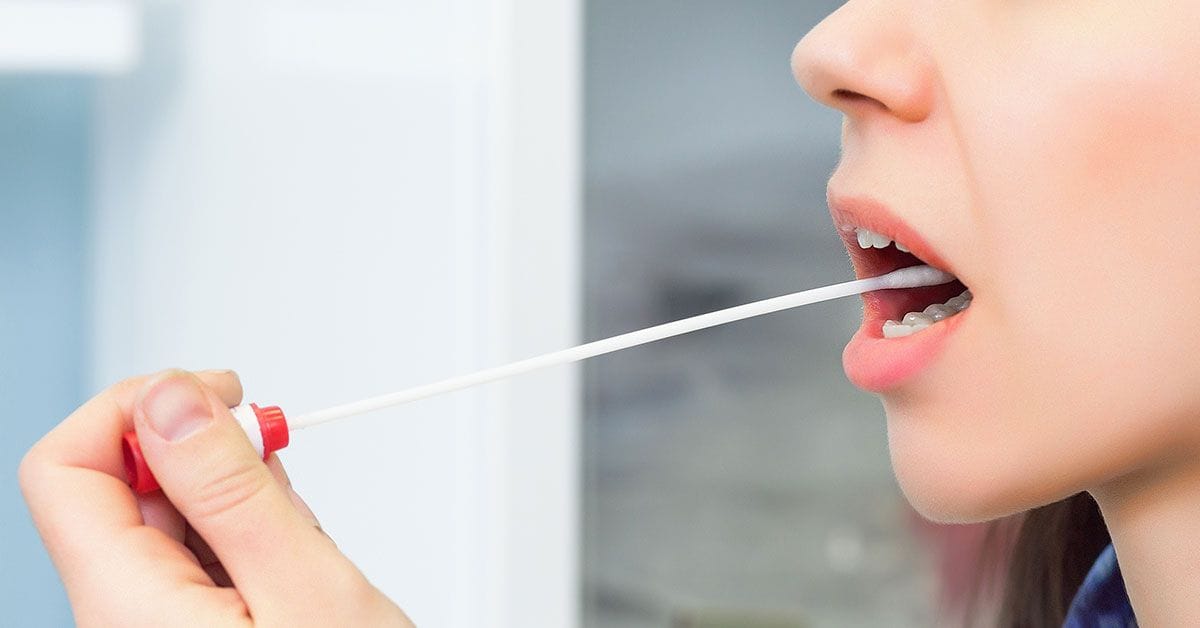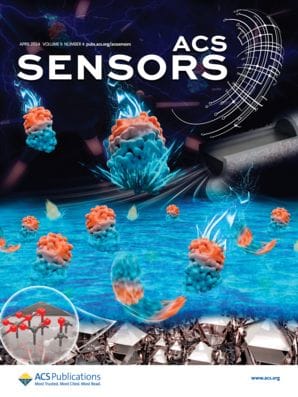Blood is the gold standard diagnostic fluid for most health exams, but saliva is an attractive, non-invasive alternative that contains many relevant and useful biomarkers. Can new biosensors help harness its potential for at-home diagnostics?

Many people do not like having blood drawn, but this method still remains the gold standard for many diagnostic tests. According to the CDC, around 14 billion laboratory tests are performed annually in the United States alone,1 with complete blood count being the most common type of test.2
Yet biomarkers are present in other bodily fluids, if we can measure them correctly. Saliva is a non-invasive option, but current analysis techniques are limited by the reliance on chromatography or lateral flow assays, which require expensive lab-based instruments operated by trained personnel and may offer only semiquantitative results.
To tackle this issue, a team of researchers from the United States and Canada began looking more deeply into electrochemical aptamer-based (EAB) biosensors. This reagent-less sensing platform allows for continuous and real-time measurements directly in undiluted, unstimulated whole saliva. In their proof-of-concept study, published in ACS Sensors, the team developed EAB biosensors capable of detecting glucose and adenosine monophosphate. Their findings indicate that EAB sensors can perform rapid and easy molecular measurements in saliva with extremely high sensitivity, capable of detecting incredibly small, almost microscopic amounts of these substances. Furthermore, these sensors can be cleaned and reused for up to a week if they are washed and kept in a phosphate-buffered saline solution at room temperature.
A similar, previous study published in the journal sought to better understand the mechanisms underlying the signal drift of EAB sensors in whole blood.4 Signal drift occurs when a sensor's ability to accurately detect certain molecules gradually decreases over time, and it is a challenging obstacle to the deployment of EAB sensors within the living body. However, understanding the reasons for signal drift is crucial for helping researchers find workarounds. In this study, the team found that two main factors contribute to this loss of signal: the electrochemically driven removal of a specific layer on the sensor, and the obstruction caused by blood components. Identifying these causes is key for developing strategies that will improve the stability and reliability of EAB sensors and similar technologies when used within the body.
Another study, published in ACS Applied Materials & Interfaces, looked at the development of better packed, more stable self-assembled monolayers to improve the signaling and extend the operational life of in vivo EAB sensors from hours to days.5 There are clear advantages for both patients and physicians to achieving continuous biomarker monitoring over a longer time period than the single blood test, which can only ever provide a snapshot. Many molecules in the body fluctuate naturally over the course of the day, or can be affected by exercise, sleep, or certain foods. Non-invasive sensors are a definite win, but their use will require real-time processing and visualization of the data collected.
In support of the need for such systems to rapidly process large data volumes, some teams are working on open-source, customizable programs. An example of this, named "Software for the Analysis and Continuous Monitoring of Electrochemical Systems" (SACMES), was shared a few years ago in Analytical Chemistry.6 SACMES also includes a graphical interface which means the user can easily change analysis parameters in real-time.
These new findings represent a promising alternative to invasive techniques, with potential for improved point-of-care clinical diagnosis and at-home measurements. Being able to monitor drugs, metabolites, hormones, and other biomarkers in situ in the body using non-invasive sensors would greatly advance both clinical practice and biomedical research.
References
- Clinical Standardization Programs. Centers for Disease Control and Prevention, 2023.
- Blood tests. National Heart, Lung, and Blood Institute, NIH, 2022.
- Nguyen, M.- D. et al. Electrochemical Aptamer-Based Biosensors for Measurements in Undiluted Human Saliva. ACS Sens. 2023, 8, 12, 4625–4635.
- Leung, K. K. et al. Elucidating the Mechanisms Underlying the Signal Drift of Electrochemical Aptamer-Based Sensors in Whole Blood. ACS Sens. 2021, 6, 9, 3340–3347.
- Shaver. A. et al. Alkanethiol Monolayer End Groups Affect the Long-Term Operational Stability and Signaling of Electrochemical, Aptamer-Based Sensors in Biological Fluids. ACS Appl. Mater. Interfaces 2020, 12, 9, 11214–11223.
- Curtis, S. D. et al. Open Source Software for the Real-Time Control, Processing, and Visualization of High-Volume Electrochemical Data. Anal. Chem. 2019, 91, 19, 12321–12328.
